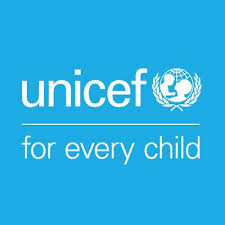Analysing child displacements caused by climate-related disasters in South Asia (2016–2022) and projecting future risks
Across South Asia, millions of children are being uprooted by the accelerating climate crisis. Between 2016 and 2022, an estimated 15.6 million children were displaced by weather-related disasters – the equivalent of more than 6,100 children every single day. Floods, storms, droughts and heatwaves are forcing families from their homes, disrupting education, health care and protection, and exposing children to heightened risks of exploitation, child labour and child marriage.
For the first time, this report provides country-level estimates of child displacement across all eight countries of South Asia. It also looks ahead, using disaster risk modelling to project that over 35 million children could be displaced in the next 30 years if urgent action is not taken. These findings offer a critical evidence base to inform policy, programming and advocacy, and to strengthen efforts to protect children on the move in a world impacted by climate change.
Weather-related disasters present a significant challenge to children’s rights and well-being across South Asia.
From floods to cyclones, droughts, and wildfires, extreme weather events are expected to intensify in the coming decades due to climate change, impacting the security, health, and education of children across South Asia. These events also drive displacement, further exacerbating vulnerabilities for children and their families.
Understanding weather-related displacement data
To address this gap, the research overlaid displacement data points with the latest demographic-gridded population data. This approach provides insight into the experiences of children displaced due to floods, storms, droughts, mass movements, wildfires, extreme temperatures, erosion, and wave actions in affected areas.
Child displacement numbers have been estimated based on the location of disaster displacements (Internal Displacement Monitoring Centre (IDMC), Global Internal Displacement Database)² and the corresponding proportion of children in the population for those locations (WorldPop).³ This methodology allows consistent comparisons across countries while including data through 2022. Data since 2022 was not available at the time of writing and has not been included in the analysis.
Between 2016 and 2022, an estimated 15.6 million children were displaced by weather-related disasters in South Asia: more than 6,100 children every day.
Children forced to move from home due to weather-related events are often statistically invisible. Existing data on displacement rarely accounts for their age, and as a result, children escaping weather-related disasters and environmental degradation often go uncounted.¹ This oversight impairs response and recovery initiatives, the ability to address their specific needs, and undermines decision-making processes and efforts to build resilience.
Historical Patterns in South Asia (2016–2022)
From 2016 to 2022, South Asia experienced more than 15 million weather-related child displacements, representing nearly one-third of global child displacements due to weather-related disasters in this period. The primary hazards driving these displacements were floods (76%), storms (19%), and droughts (3%). Other causes included landslides, extreme temperatures, and wildfires.
Children in South Asia are disproportionately affected because of high population density, poverty, and limited access to social protection systems. Furthermore, the region’s geography — dominated by low-lying river basins and coastal areas — heightens vulnerability to climate-related hazards.
India, Bangladesh, and Pakistan accounted for over 90 per cent of all recorded child displacements in the region during this period.
While these findings emphasize the urgent need to strengthen resilience measures, they also highlight that many children endure multiple displacements over short periods, disrupting education, health care, and protection systems.
Source link : View Article
Author
-

UNICEF works with partners, children and young people to find solutions to these challenges and many others. But no matter the country, UNICEF starts by reaching out to the most vulnerable children and families. The goal: provide the support needed so every child survives, thrives and develops the knowledge and skills needed to build a productive future. .



